Wolf packs are intricate social structures with each member playing a crucial role in the pack’s survival and functionality. Understanding the ranks of wolf packs—alpha, beta, and omega—provides insight into how these animals navigate their complex social environment. This article explores the roles within a wolf pack, their dynamics during traveling, hunting, and living, and addresses various related questions to offer a thorough understanding of wolf pack mentality.
Also, Discover the 10 Fascinating Personality Traits of Wolves That Make them Truly Remarkable!
The Ranks of Wolf Packs:
Common Characteristics of Wolf Packs
- Common Name: Wolf
- Scientific Name: Canis lupus
- Family Name: Canidae
- Type: Mammal
- Size: 4.5-6.5 feet (length including tail)
- Weight: 50-110 pounds
- Size Relative to a 6-Ft Human: Wolves are about the size of a large dog, with a tail that adds extra length.
- Diet: Carnivorous, primarily ungulates like deer and elk, and occasionally smaller mammals.
- Average Lifespan in the Wild: 6-8 years
- Habitat: Various environments including forests, tundras, and grasslands.
- Group Name: Pack
- Found In: North America, Europe, Asia, and the Middle East
- Conservation Status: Varies by region, generally Least Concern
The Alpha Wolf
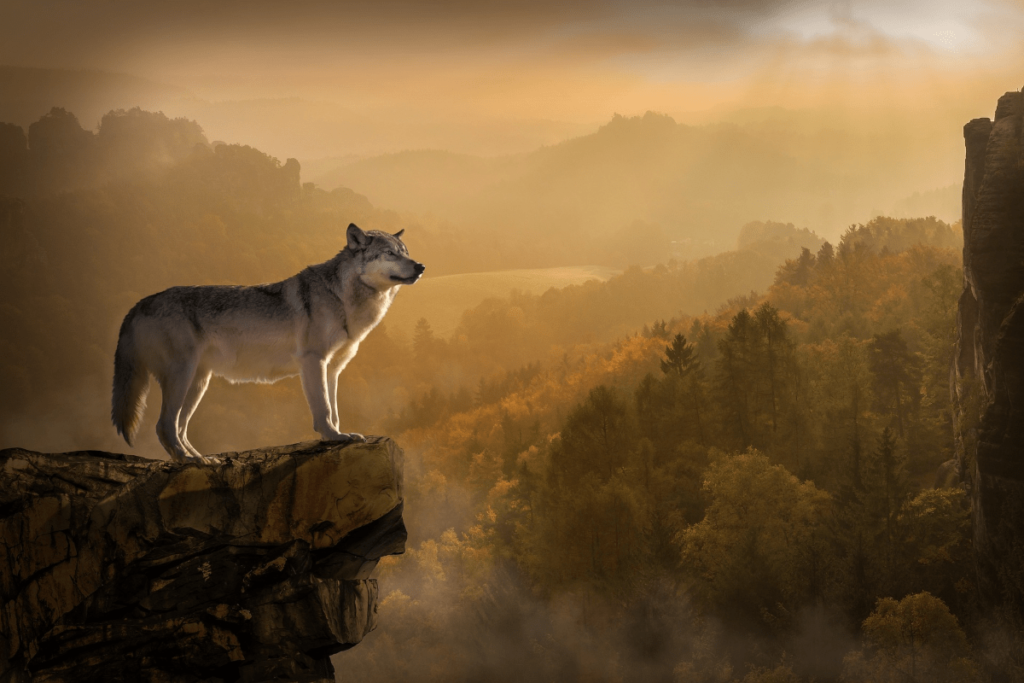
Role and Characteristics: The alpha wolf is the leader of the pack, responsible for making key decisions, leading hunts, and maintaining pack order. This role is crucial for the survival and coherence of the pack.
Traveling: The alpha leads the pack in migration and movement, ensuring the pack stays together and follows the best routes.
Hunting: During hunts, the alpha wolf takes charge, coordinating strategies and ensuring that the pack works together efficiently.
Living: The alpha maintains pack cohesion, manages conflicts, and enforces social rules.
What is an Alpha Wolf?: An alpha wolf is the dominant male or female in the pack, who leads and has the most influence over pack decisions.
How to Identify the Alpha Male in a Pack: The alpha male is often the largest and most confident wolf. He leads the pack, takes charge during hunts, and displays dominant behaviors.
Wolves are also one of the Top 10 Animals That Mate for Life
Did You Know: How do wolves communicate with each other?
Wolves communicate through various vocalizations, body language, and scent marking, making their social interactions rich and complex.
The Beta Wolf
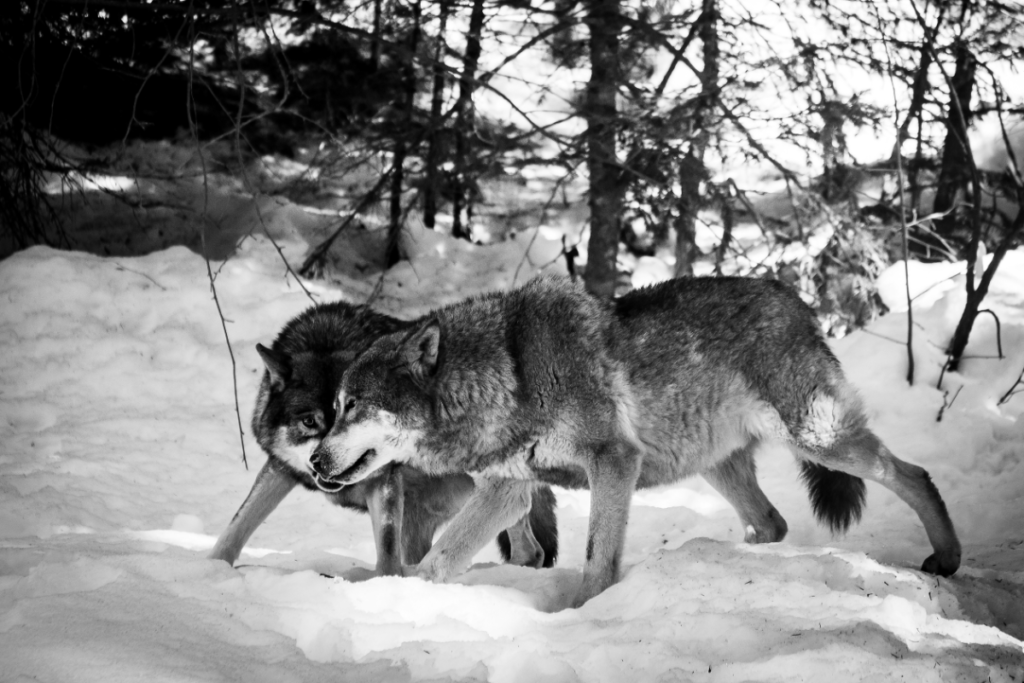
Role and Characteristics: The beta wolf is second in command, assisting the alpha and often taking over if the alpha is absent or incapacitated.
Traveling: The beta supports the alpha in guiding the pack and helps maintain order during movement.
Hunting: The beta wolf plays a crucial role in coordinating the hunt, helping manage younger or less experienced wolves.
Living: Acts as a mediator and enforcer of pack rules, ensuring that the social structure is maintained.
What is a Beta in a Wolf Pack?: A beta wolf is the second-ranking member, directly below the alpha. They support the alpha and may take on leadership roles if needed.
The Omega Wolf
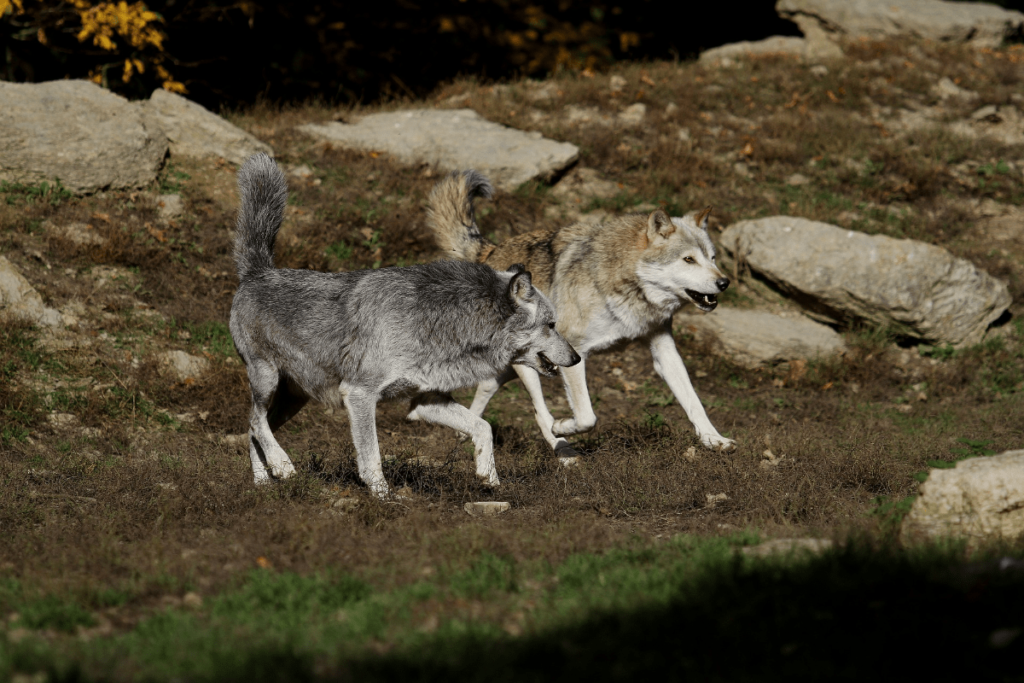
Role and Characteristics: The omega wolf is the lowest-ranking member of the pack. This position often involves taking on the role of a scapegoat for pack tensions.
Traveling: The omega typically travels at the back of the pack and may be separated from the main group during movement.
Hunting: The omega plays a minimal role in hunting but may help in scavenging or gathering leftovers.
Living: The omega experiences the most social stress but can also play a role in diffusing pack tensions and maintaining social harmony.
What is the Omega in a Wolf Pack?: The omega wolf is the lowest in the social hierarchy. They often take on the role of absorbing the pack’s stress and maintaining group cohesion.
The Wolf Pack Hierarchy
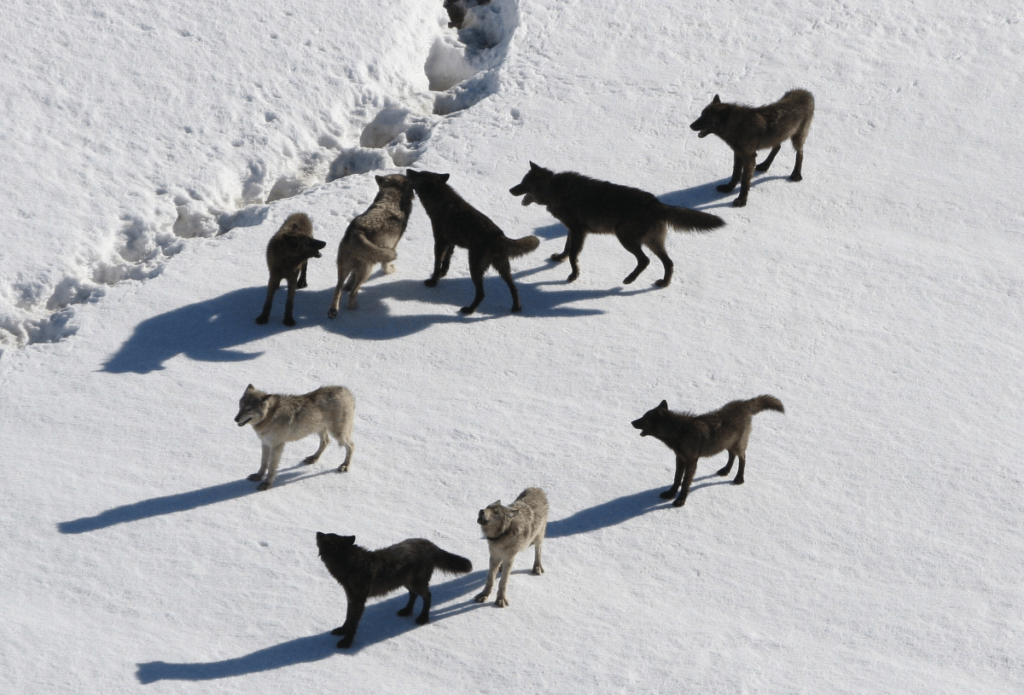
Ranks in Wolf Packs: Wolf packs are organized into a hierarchical structure with clearly defined roles, including the alpha, beta, and omega wolves. Each rank has specific responsibilities and status within the pack.
Wolf Pack Ranking System: The ranking system is established through displays of dominance and submission, with the alpha wolf maintaining leadership and the beta wolf supporting them. The omega wolf, while at the bottom, plays a crucial role in maintaining social balance.
Role of Alpha, Beta, and Omega: Each role is integral to the pack’s functioning. The alpha leads, the beta assists, and the omega helps maintain social harmony.
Curious Fact: What is the lifespan of a wolf in the wild?
Wolves typically live 6-8 years in the wild, though some can reach up to 13 years in protected environments.
How Does a Wolf Pack Work?
Wolf packs operate as cohesive units with a defined social structure. The alpha leads, the beta supports, and the omega helps to alleviate social stress. The pack’s success in hunting, traveling, and living together relies on this intricate social hierarchy.
Average Size of a Wolf Pack: The size of a wolf pack typically ranges from 4 to 7 wolves, though packs can vary in size depending on environmental conditions and prey availability.
How Many Wolves in a Wolf Pack?: Packs generally consist of 4 to 7 members, including the alpha pair, their offspring, and sometimes other related wolves.
What is a Pack of Wolves Called?: A group of wolves is called a pack.
The Guardian Wolf and Her Alpha Mate
The guardian wolf often refers to the alpha female, who plays a key role in nurturing and protecting the pack. The alpha mate, whether male or female, is essential for maintaining the pack’s leadership and social order.
What is a Luna in a Wolf Pack?: The term “Luna” is less commonly used but can refer to the alpha female in some contexts, especially in storytelling and literature.
How Do Packs of Wolves Travel?
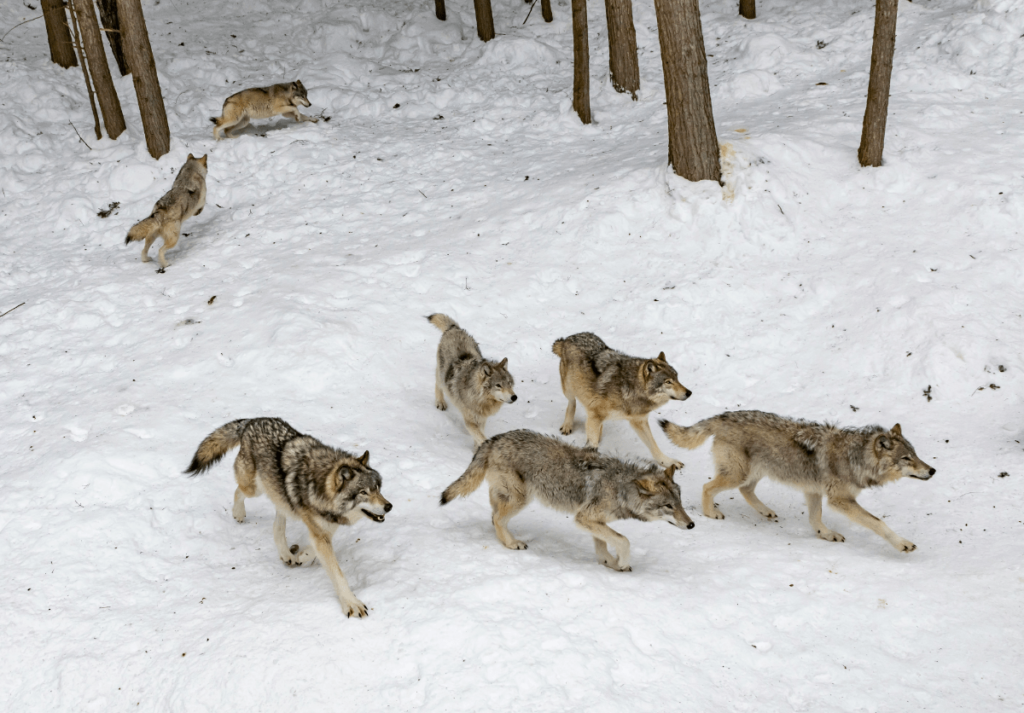
Packs of wolves travel together, with the alpha leading the way. Their travel patterns are influenced by prey availability, environmental conditions, and the need to maintain pack cohesion.
Here is The Ultimate Guide to Canidae Family Animals
Pack of Wolves Leader: The leader of the pack is the alpha wolf, who directs the pack’s movements and decisions.
Pack of Wolves Leadership: Leadership within the pack is maintained through social structures and behavioral displays, with the alpha holding the highest rank.
Conclusion
Understanding the ranks of wolf packs and their roles provides valuable insight into wolf behavior and pack dynamics. Each rank—alpha, beta, and omega—has specific responsibilities that contribute to the pack’s survival and social harmony. This knowledge is crucial for conservation efforts and enhances our appreciation of these remarkable animals.
For more exciting wildlife content and updates, visit our homepage PrimalWildlife
Share your thoughts and experiences with wolf packs in the comments below. Join the discussion on how these fascinating creatures maintain their social structure and what it means for their conservation.
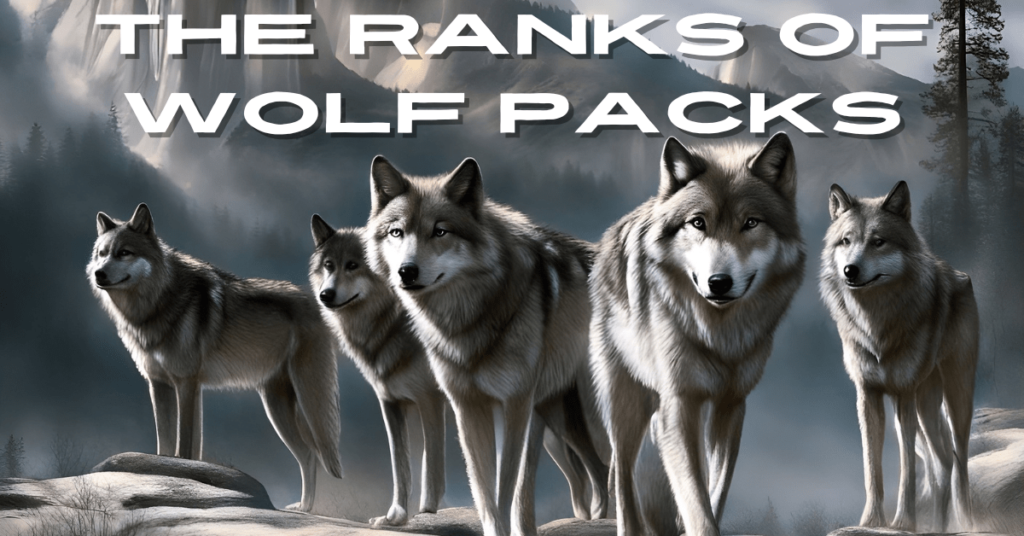




Pingback: The Power of Love: Top 10 Animals That Mate for Life - primalwildlife.com